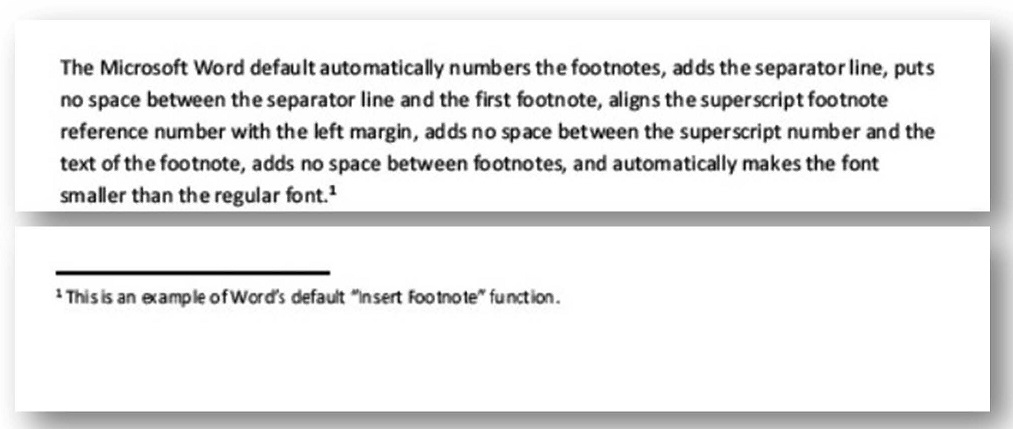 There are three basic kinds of notes used in writing. First, the footnote, which appears at the bottom of the same page as the referring number. Second, the endnote, which appears at the end of the document with all other references in the document. And third, the textnote, which appears in the text surrounded by parenthesis.
There are three basic kinds of notes used in writing. First, the footnote, which appears at the bottom of the same page as the referring number. Second, the endnote, which appears at the end of the document with all other references in the document. And third, the textnote, which appears in the text surrounded by parenthesis.
While researching for this topic, I found it interesting that there is not a lot of material out there on footnotes in legal documents. I assume this is because the use of footnotes is discouraged and because Bryan Garner disapproves. The argument against footnotes (for other than citations to cases) is a good one. Readers will assume that the information they need is contained in the main body of the document and that a footnote is ancillary or extraneous material adding “fluff,” if you will, to the main thought. Also, there is a very real possibility that it is confusing and potentially irritating to your reader to keep bobbing their head up and down as they’re reading to go from the heart of the document to the bottom of the page. Not to mention it breaks the train of thought associated with reading your brilliant work.
Truth is, however, attorneys use footnotes, so there should be a standard way of preparing them. Unfortunately, there is not. The Gregg Reference Manual uses a completely different format than the standard Microsoft Word default. I, for one, will continue to use the Microsoft Word default. Not only is it one less thing to remember to change, but if using footnotes is part of an attempt to save space in a document subject to page limitations, using the default will help.
The Microsoft Word default automatically numbers the footnotes, adds the separator line, puts no space between the separator line and the first footnote, aligns the superscript footnote reference number with the left margin, adds no space between the superscript number and the text of the footnote, adds no space between footnotes, and automatically makes the font smaller than the regular font. 
One caveat here is that some courts require the footnote to be in the same size font as the regular text. In that case, using footnotes does not save any space–particularly when the court-required font size is 14.
In your main text, there should be no space before your superscript footnote reference number and the word immediately preceding. However, if your footnote reference comes at the end of a sentence, the superscript footnote reference number should come immediately after the terminal punctuation with no space between the punctuation and the superscript number.
You should make an effort to keep your entire footnote on the same page as the reference. If your reader is already annoyed at being “interrupted” by being forced to the bottom of the page in the middle of a paragraph, they will be even more annoyed if they have to go to the next page and back again.
There is little more annoying than reading a document, getting to a footnote, and going to the bottom of the page only to see “Id.,” particularly when you see three or four of them in the next few footnotes. Just add that behind the text and be done with it. Your reader will thank you.
I know that footnotes, endnotes, and textnotes have a place in legal writing. Just use them sparingly and with good cause unless your intent really is to irritate your reader.


 Follow
Follow